
European Radiology Experimental
Scope & Guideline
Transforming Insights into Impactful Radiological Practices
Introduction
Aims and Scopes
- Artificial Intelligence in Imaging:
The journal consistently publishes research on the application of AI and machine learning for image analysis, segmentation, and diagnosis across various imaging modalities. - Advanced Imaging Techniques:
There is a significant focus on novel imaging techniques, including photon-counting CT, high-resolution MRI, and dual-energy CT, aimed at improving image quality and diagnostic capabilities. - Radiomics and Biomarkers:
Research on radiomics, which involves extracting quantitative features from medical images to predict clinical outcomes, is a core area of interest, particularly in oncology. - Interventional Radiology Innovations:
The journal explores advancements in interventional radiology, including novel techniques and tools for minimally invasive procedures, which enhance patient outcomes. - Comparative Studies of Imaging Modalities:
A consistent theme is the comparative analysis of different imaging modalities to establish best practices and improve diagnostic protocols.
Trending and Emerging
- Integration of AI and Machine Learning:
There is a significant increase in studies employing AI algorithms for image analysis, segmentation, and predictive modeling, showcasing the growing reliance on technology to enhance diagnostic accuracy. - Photon-Counting CT Technology:
Recent papers highlight advancements in photon-counting CT, which offers improved image quality and lower radiation doses, signifying a trend towards more efficient imaging solutions. - Radiomics and Personalized Medicine:
Emerging research focuses on radiomics as a tool for personalized medicine, where imaging biomarkers are used to tailor treatments based on individual patient characteristics. - Non-Invasive Imaging Biomarkers:
The trend towards non-invasive techniques for assessing disease states, such as using radiomic features for cancer prognosis, is gaining traction, reflecting a shift towards patient-centered approaches. - Interdisciplinary Research:
There is a growing trend in interdisciplinary studies that combine imaging with other fields such as genetics, pathology, and machine learning, aiming for comprehensive approaches to healthcare challenges.
Declining or Waning
- Traditional Imaging Techniques:
There appears to be a waning interest in conventional imaging techniques, such as standard X-rays and basic ultrasound, as research increasingly gravitates towards advanced modalities like CT and MRI. - Basic Radiographic Studies:
The journal has seen fewer publications focused on basic radiographic studies without the integration of AI or advanced imaging technology, suggesting a preference for more innovative approaches. - Generalized Clinical Applications:
Research that does not employ specific imaging innovations or advanced methodologies is becoming less common, as the journal emphasizes studies with clear technological advancements.
Similar Journals
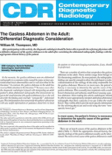
Contemporary Diagnostic Radiology
Innovative Insights in Diagnostic RadiologyContemporary Diagnostic Radiology is a pivotal journal in the field of medical imaging and radiology, published by Lippincott Williams & Wilkins. With an ISSN of 0149-9009 and an E-ISSN of 1938-1395, this journal serves as an essential platform for disseminating high-quality research and advances in diagnostic radiology and related disciplines. While it is categorized in the lower quartiles (Q4) for its performance in the 2023 rankings in both Neurology, Radiology, Nuclear Medicine and Imaging, and Surgery, its focus on emerging technologies and methodologies in imaging continues to provide valuable insights for practitioners and researchers alike. The journal’s scope includes innovative diagnostic tools, imaging techniques, and case studies, fostering collaboration and knowledge sharing in the medical community. Although it does not offer open access options, its commitment to contributing to the ongoing dialogue in clinical imaging is undisputed, making it an essential resource for professionals seeking to stay abreast of current trends and research in the rapidly evolving landscape of diagnostic radiology.
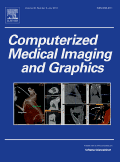
COMPUTERIZED MEDICAL IMAGING AND GRAPHICS
Pioneering Insights in Computerized Medical ImagingCOMPUTERIZED MEDICAL IMAGING AND GRAPHICS, published by PERGAMON-ELSEVIER SCIENCE LTD, is a leading international journal that has significantly contributed to the fields of medical imaging, graphics, and informatics since its establishment in 1988. With a remarkable reputation reflected in its Q1 quartile rankings across multiple categories—including Computer Graphics, Health Informatics, and Radiology—this journal maintains a prominent position in the academic community, evidenced by its Scopus rankings where it ranks in the top percentile across various disciplines. The journal aims to advance knowledge and innovation within the intersection of technology and healthcare, featuring high-quality research that addresses contemporary challenges in medical imaging and graphical methodologies. With no open access options currently available, this journal serves as a crucial resource for researchers, professionals, and students who are at the forefront of advancing imaging technology and its applications in medicine.

Tomography
Transforming the landscape of medical imaging and diagnostics.Tomography is an esteemed peer-reviewed journal published by MDPI, focusing on a broad spectrum of topics related to medical imaging and diagnostics. Launched in 2015, this Open Access journal serves as a vital platform for researchers, professionals, and students in the fields of medicine, radiology, nuclear medicine, and imaging. With an impressive impact factor reflecting its relevance, the journal has achieved a quartile ranking of Q2 in both Medicine (Miscellaneous) and Radiology, Nuclear Medicine, and Imaging as of 2023. Renowned for disseminating high-quality research, Tomography welcomes original research articles, reviews, and technical notes, fostering innovation and collaboration within the scientific community. Housed in Basel, Switzerland, the journal aims to bridge the gap between fundamental research and clinical application, appealing to a diverse readership eager to advance the field of medical imaging.

SA Journal of Radiology
Transforming Practice: Elevating Radiology Through Open AccessThe SA Journal of Radiology is a prominent open-access journal published by AOSIS, dedicated to advancing knowledge in the fields of Radiology and Ultrasound Technology. Established in 2004, this South African journal provides a platform for researchers, professionals, and students to disseminate valuable findings and share innovative practices in medical imaging. With an ISSN of 1027-202X and an E-ISSN of 2078-6778, the journal has become an important resource for those involved in radiological sciences, despite currently holding a Q4 ranking in both Radiological and Ultrasound Technology and Radiology, Nuclear Medicine and Imaging categories. Covering a converged time span from 2014 to 2024, the journal aims to promote scholarly communication and enhance the accessibility of research, positioning itself as a key player in the global radiological community. In a landscape where open access is increasingly critical, the SA Journal of Radiology is committed to fostering research collaboration and facilitating the exchange of ideas among clinicians and academics alike.
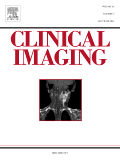
Clinical Imaging
Innovating Radiology Through Cutting-Edge ResearchClinical Imaging, published by Elsevier Science Inc, is a renowned journal dedicated to the field of radiology, nuclear medicine, and imaging. With an ISSN of 0899-7071 and an E-ISSN of 1873-4499, this esteemed publication has established its significance in advancing imaging science since its inception in 1989 and continues to make impactful contributions to the discipline through 2024. The journal holds a prestigious Q2 ranking in the category of Radiology, Nuclear Medicine, and Imaging, reflecting its critical role in bridging research and clinical practice. Currently ranked #113 out of 333 by Scopus, with a notable 66th percentile, it offers a platform for disseminating high-quality research, reviews, and case studies that inspire innovation and enhance imaging techniques. Although it primarily functions as a subscription-based journal, it remains dedicated to accessibility and the dissemination of pivotal findings that inform both academia and clinical settings. Clinical Imaging is essential for researchers, professionals, and students alike, offering insights that shape the future of diagnostic imaging.

DENTOMAXILLOFACIAL RADIOLOGY
Transforming Patient Care through Radiological InnovationDentomaxillofacial Radiology, published by the British Institute of Radiology, serves as a premier journal in the realm of radiology, focusing specifically on imaging techniques and methodologies that are essential for the diagnosis and treatment in the dental and maxillofacial regions. Since its inception in 1972, the journal has maintained a rigorous standard for publishing impactful research, currently boasting an impressive impact factor that underscores its relevance and authority in the field. With categorization in Q1 for both Dentistry (Miscellaneous) and Otorhinolaryngology, as well as Q2 for Medicine (Miscellaneous), this journal supports professionals and students alike through the dissemination of cutting-edge research. Although it does not currently operate as an open-access platform, it is accessible for a wide audience eager to engage with the latest advancements in radiology, nuclear medicine, and imaging. By bridging the gap between clinical practice and innovative research, Dentomaxillofacial Radiology continues to be an invaluable resource for academics and practitioners seeking to enhance their expertise and improve patient outcomes in a rapidly evolving field.
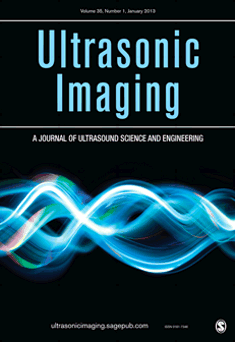
ULTRASONIC IMAGING
Exploring New Dimensions in Ultrasonic ResearchULTRASONIC IMAGING, published by SAGE PUBLICATIONS INC, is a leading journal within the fields of Radiology, Nuclear Medicine, and Imaging, with a particular focus on advancing the science and application of ultrasound technology. Since its inception in 1979, the journal has provided a platform for high-quality research, featuring innovative studies that bridge theoretical advancements and practical applications, making it an essential resource for researchers and professionals. With a notable impact factor reflecting its robust contribution to the medical community (2023: Q2 rankings in both Radiological and Ultrasound Technology and Radiology, Nuclear Medicine, and Imaging), ULTRASONIC IMAGING serves to disseminate pivotal developments in diagnostic imaging techniques, enhancing the understanding of ultrasound's role in patient care. Researchers are encouraged to explore this journal's collection of cutting-edge articles that push the boundaries of knowledge in ultrasound imaging and its implementation in clinical practices.

Iranian Journal of Radiology
Pioneering Knowledge in the Evolving Field of RadiologyWelcome to the Iranian Journal of Radiology, a pivotal platform dedicated to advancing the field of radiology, nuclear medicine, and medical imaging. Published by BRIEFLAND, this journal aims to disseminate high-quality original research, reviews, and clinical studies that contribute substantially to the global scientific community. Established in 2008 and spanning until 2024, the journal provides an essential archive of knowledge in a rapidly evolving discipline. Although it currently holds a Q4 quartile ranking in the 2023 Scopus metrics, it serves as an important resource for both emerging and established researchers looking to submit their work. Located in the Netherlands, the journal is committed to open dialogue and collaboration amongst professionals in the field, reflecting its accessibility and relevance to both practitioners and academics. With its continued growth and commitment to quality, the Iranian Journal of Radiology is poised to enhance understanding and innovation in diagnostic imaging.
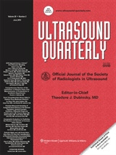
Ultrasound Quarterly
Transforming Patient Care Through Imaging Insights.Ultrasound Quarterly is a leading journal published by Lippincott Williams & Wilkins, dedicated to advancing knowledge and practice in the fields of radiology, nuclear medicine, and imaging. Established in 1988, the journal has served as a vital platform for researchers, clinicians, and students seeking to stay abreast of the latest advancements and techniques in ultrasound technology. With an impact factor that reflects its significance in the field—ranking in the Q3 category within its specialty based on the 2023 metrics—this journal reaches a global audience, facilitating knowledge dissemination and fostering innovation. Ultrasound Quarterly publishes original research, reviews, and clinical studies, making it an essential resource for professionals committed to enhancing patient care through effective imaging practices. To explore its comprehensive articles, visit the journal's website for easy access to the latest research findings.

Diagnostic and Interventional Radiology
Unlocking the Future of Radiology Through Open AccessDiagnostic and Interventional Radiology, published by the Turkish Society of Radiology, is a renowned open-access journal dedicated to advancing the fields of radiology, nuclear medicine, and imaging. With its transition to open access in 2022, the journal aims to foster knowledge dissemination and accessibility for researchers, healthcare professionals, and students alike. This esteemed publication, indexed in Scopus, features a robust editorial board and peer-reviewed articles that contribute significantly to the body of work in cardiology, radiology, and related disciplines. The journal currently holds a significant position, reflected in its Category Quartiles ranking—Q2 in Radiology, Nuclear Medicine, and Imaging, and Q3 in Cardiology and Cardiovascular Medicine, highlighting its relevance and impact in these critical medical fields. Research published in this journal is vital for evolving diagnostic and interventional techniques, clearly situating it as a key resource for those seeking to stay at the forefront of radiological science.